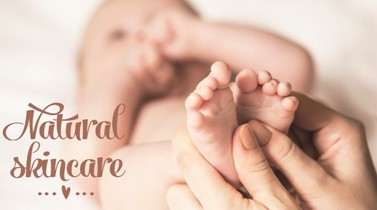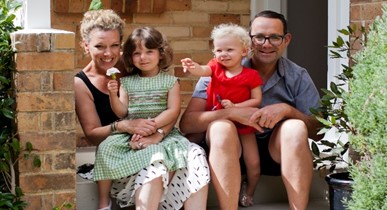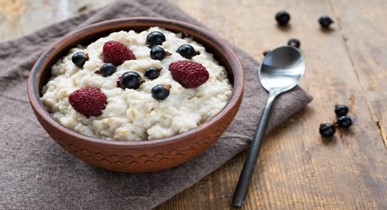How to wean your baby

All good things one day come to an end. Alice Cranfield discusses the practical and emotional implications of weaning baby.
Breastfeeding eventually comes to an end for every mother and child. For some, this happens early on but for others, breastfeeding can continue for many years. Either way, the completion of weaning is a big milestone for your child developmentally and it’s a big step for you as a mother, too.
When to wean and how to go about it varies for everyone. What may work for one family, may not work for another. Plunket Clinical Advisor, Allison Jamieson, says the first thing mothers need to think about when embarking on weaning is what their needs are and what they need to do to achieve them. Like many aspects of parenting, Allison says, “one size does not fit all when it comes to weaning and how to do it is up to the individual family.”
Mother of four, Celia Bell Booth, found that different stages in her life impacted the length of time feeding continued with each child. While her first daughter, Marcel, was breastfed until age two, her son, Remy, breastfed until three and a half. Her final two children, Max and Ari both breastfed until they were one.
“By the time the final children were born, there were more people around so I could get help with feeding, making it easier for me to do things. Because of this I introduced the bottle and weaning seemed to happen earlier.
“It was also a case of what each individual child wanted,” she says. “Remy for example, was much more attached to me so breastfeeding continued for a lot longer.”
When and why
There are many reasons why you may decide to wean. A changing situation, such as returning to work or health issues, can determine this decision. The Ministry of Health recommends women exclusively breastfeed until babies are around six months old. It also recommends women continue to breastfeed until their baby is one year or older, advising, “the longer you breastfeed your baby, the better.”
It may surprise you to hear that weaning starts well before you drop your first feed. Kathleen Huggins, author of The Nursing Mother’s Guide to Weaning, says weaning is a two-phase process. Stage one is getting your baby used to the idea of nourishment from somewhere other than your breasts. Stage two is the gradual cutting down of breastfeeds.
Easy does it
No matter what style of weaning you lean towards, the consensus is that a gradual approach is best. La Leche League encourages women to wean “gradually, and with love.”
Author of What to Expect When You’re Expecting, Heidi Murkoff, says that if the weaning process is done suddenly it can be very unsettling for both the mother and the baby.
“For the baby it’s too unsettling, for the mother, there are not only the emotional issues (compounded by the sudden hormonal havoc that will result) but also the physical ones,” she writes. “Leaking, engorgement, clogged ducts and infections are all more likely if breastfeeding is stopped suddenly.”
Trish Warder, an Auckland based lactation consultant, is regularly asked to help mothers with weaning. Trish says she is often approached when a mother’s life is changing due perhaps to an illness or because she is returning to work.
“I like to meet the mum, get her full history, find out why she wants to wean and what she has heard about weaning,” says Trish. “Often, a lot of counselling and discussion is required to help a mother clarify her situation. There’s often a lot of misinformation such as, ‘I was told I couldn’t feed with this medication’ or, ‘I didn’t think I could feed while I was back at work.’”
Trish takes women through their options and helps them formulate an individual weaning plan. In some cases, partial weaning may be encouraged or other issues that have hindered feeding may be resolved.
“The aim is to get a clear picture of the individual mother, her baby, and her circumstances. We discuss her options, formulate a plan and stay in contact as she passes through weaning,” says Trish. “All of the steps are important and by following them we end up with a much happier mum and baby, not to mention healthy breast tissue at the end.”
Holding on
There are some times when it is not ideal to start weaning. Heidi Murkoff says mothers should (when possible) postpone the idea entirely at a time of change in your baby’s life such as a new baby-sitter, a return to work, or moving house.
Trish Warder says it is generally not acknowledged how emotionally important breastfeeding is for a child and often mothers are very surprised at their own responses too. She says there can be quite a feeling of grief once breastfeeding comes to a complete end.
Mother of two, Francesca Sveistrup, reluctantly weaned her second son, Blake, from breast to bottle when he experienced severe colic and allergic reactions. With advice from her GP, she switched to a specialised formula.
“I was devastated. I was determined to breastfeed and I did so for as long as possible, but in the end, I had to not beat myself up as I had done what I could.”
Francesca continued to make feeding a special time for the two of them by sitting in a quiet room at feed time and talking to Blake as he had his bottle.
Heidi Murkoff encourages mothers to keep in mind that breastfeeding is only one aspect of the relationship with a baby. She writes, “giving it up won’t weaken the bond or lessen the love between you. In fact, some women find that the relationship is enhanced as they spend less time breastfeeding and more time actively interacting.”
As you start to drop feeds or move to a bottle, find other ways to bond with your child such as reading a book, cuddling on the sofa or watching a favourite TV show.
Blame the hormones
Heidi Murkoff says weaning, like menstruation, pregnancy, and the postnatal period, is a time of hormonal upheaval and results in irritability, and mood swings. Some women even experience a slight post weaning depression and may require professional help. Keep an eye on your hormones and if they seem to be larger than life speak to your GP, local Plunket family centre or your Plunket nurse.
Remember to be kind to yourself and your child through the weaning process. It’s also important to remember not to compare your family to others through this stage. No matter how you wean – love, patience and adaptability are all keys to helping you move smoothly through this transition.
Breast care during weaning
As you journey through the weaning process it’s important to be kind to your breasts. They’ve been working pretty hard to nourish your little one so it’s good to keep a close eye on them as their workload decreases.
Breastfeeding is regulated by the hormone prolactin which is released from the pituitary gland. As the demand for breastfeeding grows, the higher the levels of prolactin are. Auckland based general practitioner, Dr Philippa Fox, says that once demand drops, this feeds back to the brain to reduce the release of prolactin, thus slowing the milk supply.
“The main risk would be weaning too fast, before the supply has decreased, as this can result in engorgement and blocked ducts which can potentially lead to mastitis,” she says.
Dr Fox says key symptoms to be wary of during weaning are localised, painful redness over the breast associated with systemic flu-like symptoms such as high fever (over 38 degrees), chills, body aches, malaise, headaches or generally feeling unwell.
“These symptoms indicate that mastitis is developing and medical advice should be sought,” she says. “Treatment with antibiotics is needed when a woman becomes systemically unwell with mastitis due to the risk of breast abscess development.”
Thankfully, there are some simple home remedies that can help reduce pain and the risk of engorgement or infection:
• If you experience areas of painful engorgement, try using a cool compress. Traditionally women have been told to use cool raw cabbage leaves inside their bra – the coldness and natural breast-like shape are helpful for pain.
• While it is okay to express a small amount of milk to ease engorgement, avoid expressing too much as this could encourage the supply to increase again.
• Blocked ducts (painful firm lumps that are sore to touch) can be helped by gently massaging the breasts in the direction of the nipples. A warm compress can help too.
• Wear a supportive bra during the weaning process but don’t bind your breasts too tightly as this can lead to the obstruction of ducts.
• Simple pain relief medications such as Ibuprofen or Paracetamol are safe to use in breastfeeding.
• OHbaby! expert naturopath, Natasha Berman, says a sage tincture can help reduce milk supply, but she encourages you to discuss it with a naturopath first.
•Finally, remember that gradual weaning is best not only emotionally but physically, too. Gradual weaning will give your body time to naturally adjust its milk supply.
Alice Cranfield lives in Auckland’s Piha with her husband, their sixteen-month-old daughter Lily and their new puppy. Alice writes for a variety of magazines but especially enjoys writing for mothers as she journeys through parenthood herself.

AS FEATURED IN ISSUE 29 OF OHbaby! MAGAZINE. CHECK OUT OTHER ARTICLES IN THIS ISSUE BELOW

















